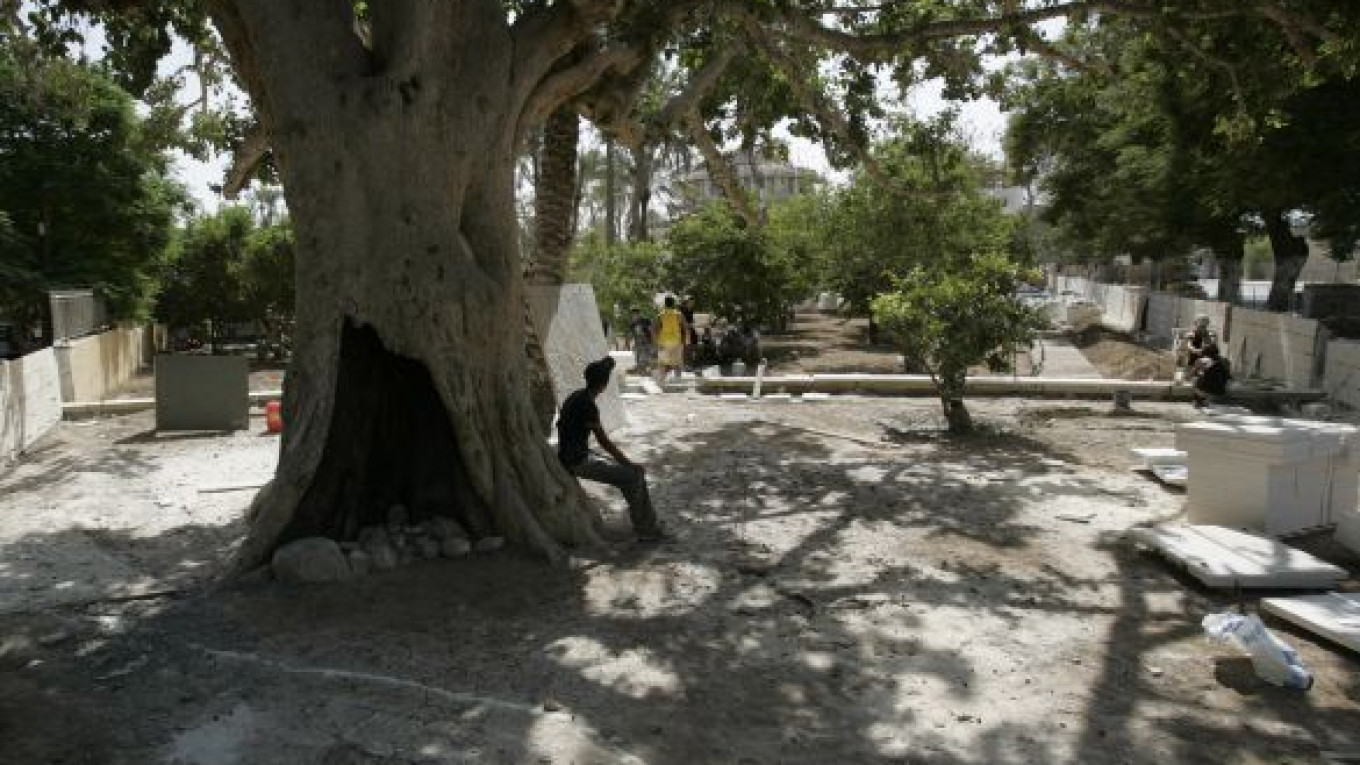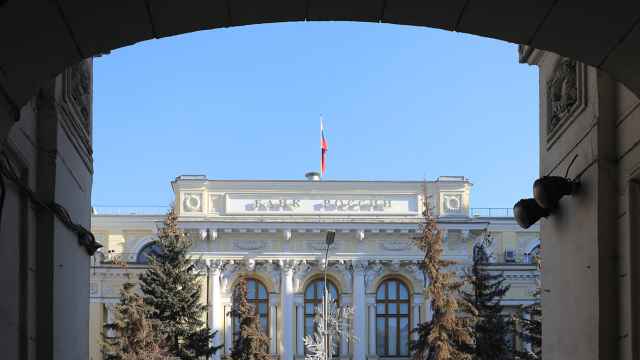"And Jesus entered and passed through Jericho. And behold, there was a man named Zacchaeus, who was the chief among the tax collectors, and he was rich. And he sought to see Jesus … but could not because of the crowd, because he was of short stature. And he ran ahead, and climbed up into a sycamore tree to see him: for he was to pass that way. And when Jesus came to the place, he looked up, and saw him, and said unto him, Zacchaeus, make haste, and come down; for today I must abide at thy house." Luke 19:1-5
JERICHO, West Bank — With a giant trunk and boughs towering 18 meters high, a gnarled sycamore near Jericho's main square has long been touted as the very tree that the hated tax collector climbed to get a glimpse of Jesus.
Now it's taking center stage in a Russian-backed plan to transform this ancient desert backwater into a tourism hub.
The tree, once tucked obscurely away on a side street, is a featured attraction of a Russian government-funded museum complex to be unveiled this month as part of Jericho's 10,000th birthday celebrations.
At the Oct. 10 start of yearlong festivities, Palestinian President Mahmoud Abbas will outline ambitious plans for Jericho, a Jordan Valley oasis that bills itself as the world's oldest and lowest-lying town, at some 238 meters below sea level.
"This is to promote Palestine as a destination," Palestinian Tourism Minister Khouloud Daibes said of the venture, which includes a resort to be built on the shores of the nearby Dead Sea.
The Palestinians even hope for an airport in the area, though both projects hinge on Israeli approval.
The plans reflect the Abbas government's approach of building a Palestinian state from the ground up, regardless of the ups and downs of negotiations with Israel. Such pragmatism grew out of painful years of conflict, especially in the past decade, when Palestinians across the West Bank saw many economic gains wiped out.
The road leading into Jericho still bears witness to the scars of the fighting, but also fledgling signs of prosperity.
It's now a four-lane highway instead of a potholed country road, and an Israeli army checkpoint that used to snarl traffic and deter visitors has been removed because of a growing atmosphere of calm. But a casino, shut after the outbreak of fighting in 2000, remains closed because the Israeli military believes that it is too dangerous for Israelis — the main clientele — to return to Jericho.
Still, more foreign tourists are visiting, about 1 million a year since the Israeli-Palestinian fighting began to drop off in 2006, said Jericho Mayor Hassan Saleh. Their main stops include Tel Sultan, an archaeological dig some say proves that Jericho was first settled around 8,000 B.C., and an 8th-century Umayad palace with intricate mosaics.
Many visitors also stop at the ancient sycamore, usually snapping pictures before getting back on their buses. The hope is that the $3 million museum and visitors' complex to be opened next to the tree will encourage visitors to linger.
Local lore has long maintained that the tree, whose massive partially hollowed trunk measures 2 meters in diameter, is the very one featured in the biblical tale of Jesus and Zacchaeus, the tax collector of short stature who, according to the Gospel of Luke, climbed the tree to get a better look at Jesus.
The tree will eventually be ringed by the perimeter wall of the museum compound.
On Friday, dozens of Palestinian and Russian workers laid brick, rushing to finish the white stone building with two domes and several graceful columns in time for the Oct. 10 opening. The museum, which sits on land bought by the Russian government in the 19th century, will feature Russian art and an exhibit on cultural ties between Russia and the Palestinian territories, as well as artifacts discovered during a salvage dig before construction began.
In the garden, workers laid tiles for a walkway from a recently excavated Byzantine-era mosaic to the sycamore tree. Landscape architect Sofiya Minasiyan said she plans to fill the grounds with plants mentioned in the Bible.
Daibes, the tourism minister, said tests are being conducted on the health of the tree, in hopes of finding ways to keep it strong. She said preliminary tests have shown that the sycamore is more than 2,000 years old.
Mordechai Kislev, an Israeli archaebotanist, said it is quite possible for sycamores to live that long, though it's difficult to estimate a sycamore's age because it does not have annual growth rings.
The tree does have a rival: Nearby, in the courtyard of a Greek Orthodox church, the huge trunk of a dead sycamore encased in glass is also presented as the biblical tree.
Still, Saleh said the tree in the Russian complex is believed to be the oldest sycamore in Jericho. "People believe that this is the tree," the mayor said.
Some visitors take the uncertainty in stride.
"Of course, we've heard stories from the Bible … and I can imagine that it would be like this," said Anna Boertveit, 47, of Stavanger, Norway, as her tour group stopped for photographs.
"If it's really the tree does not matter that much to me."
A Message from The Moscow Times:
Dear readers,
We are facing unprecedented challenges. Russia's Prosecutor General's Office has designated The Moscow Times as an "undesirable" organization, criminalizing our work and putting our staff at risk of prosecution. This follows our earlier unjust labeling as a "foreign agent."
These actions are direct attempts to silence independent journalism in Russia. The authorities claim our work "discredits the decisions of the Russian leadership." We see things differently: we strive to provide accurate, unbiased reporting on Russia.
We, the journalists of The Moscow Times, refuse to be silenced. But to continue our work, we need your help.
Your support, no matter how small, makes a world of difference. If you can, please support us monthly starting from just $2. It's quick to set up, and every contribution makes a significant impact.
By supporting The Moscow Times, you're defending open, independent journalism in the face of repression. Thank you for standing with us.
Remind me later.






